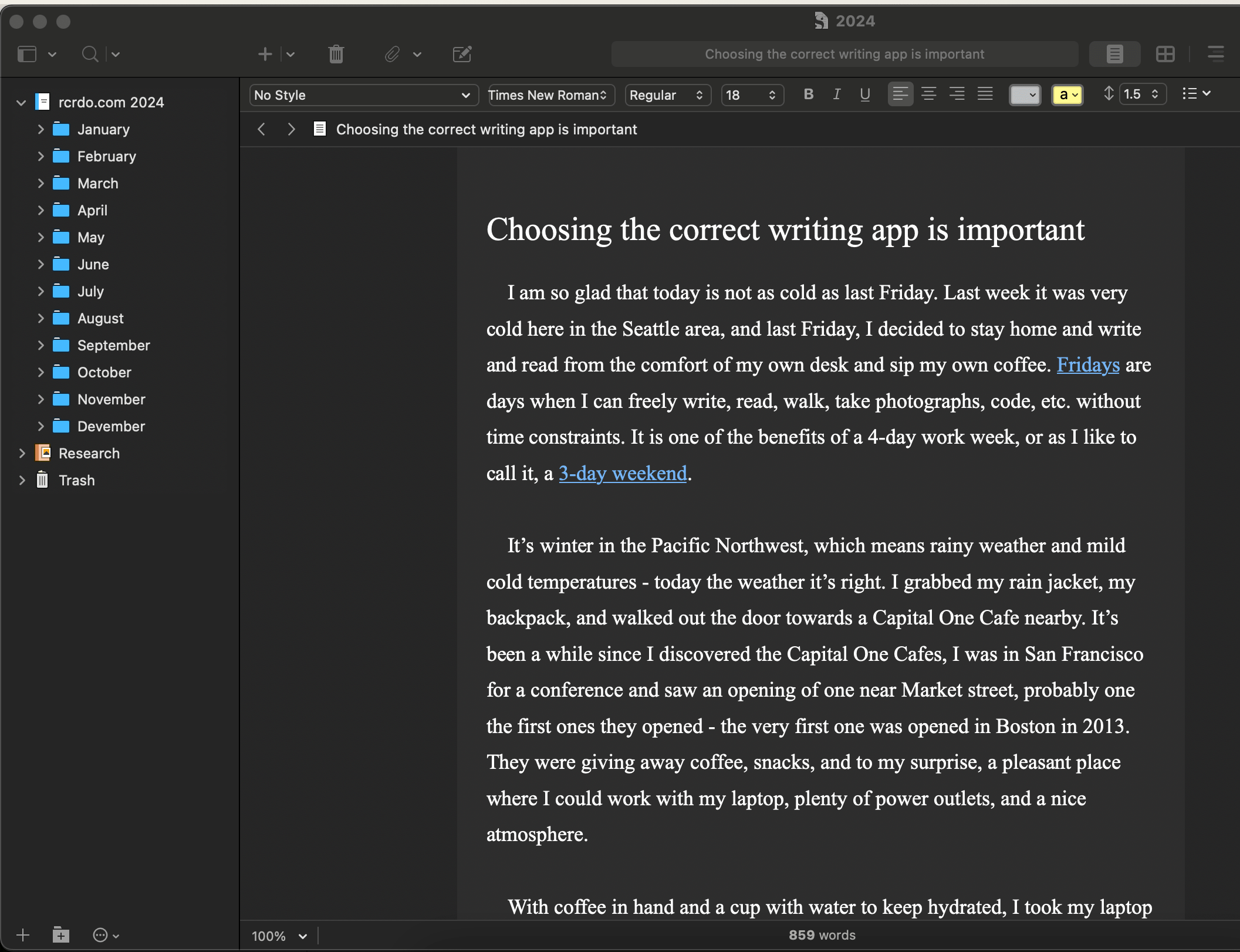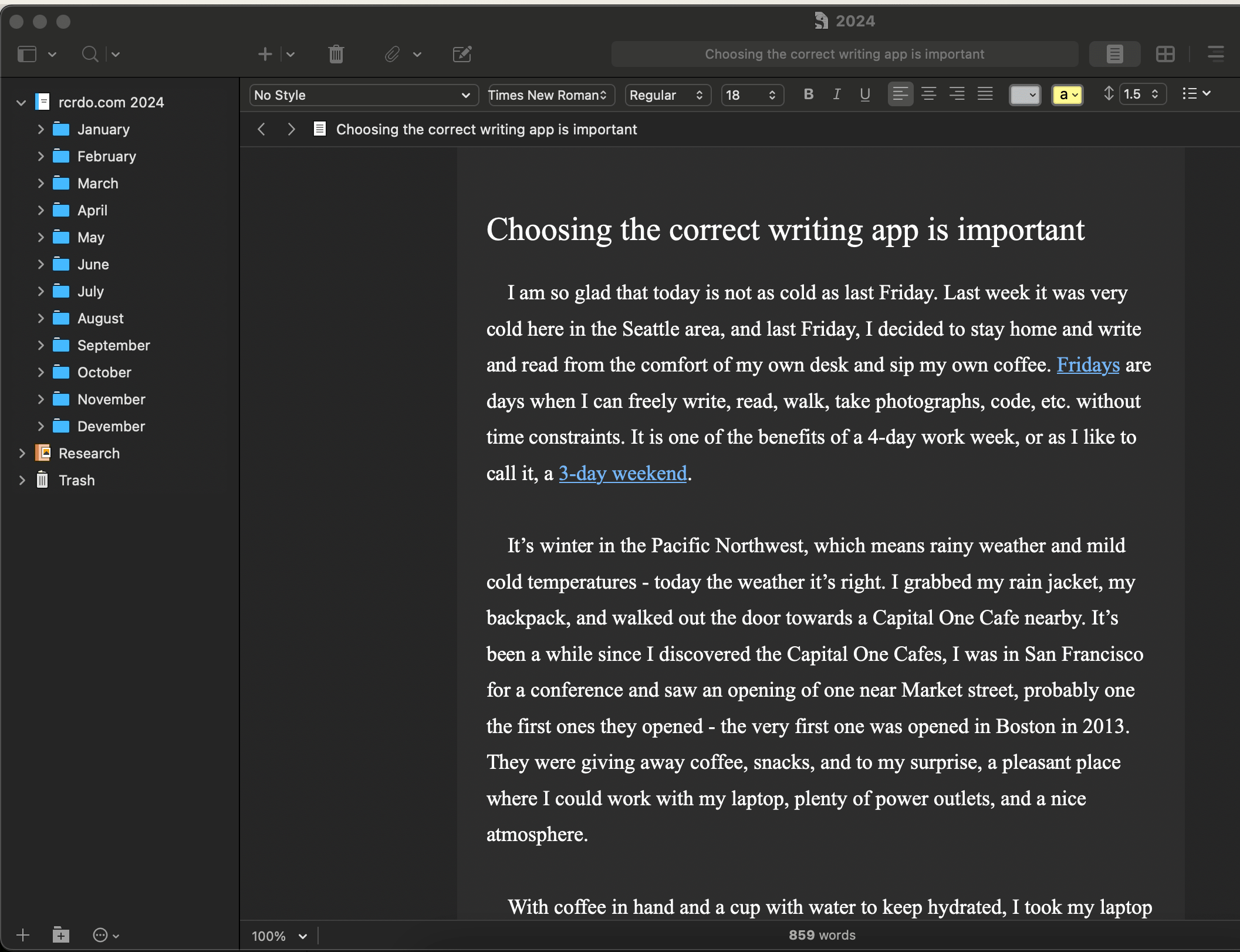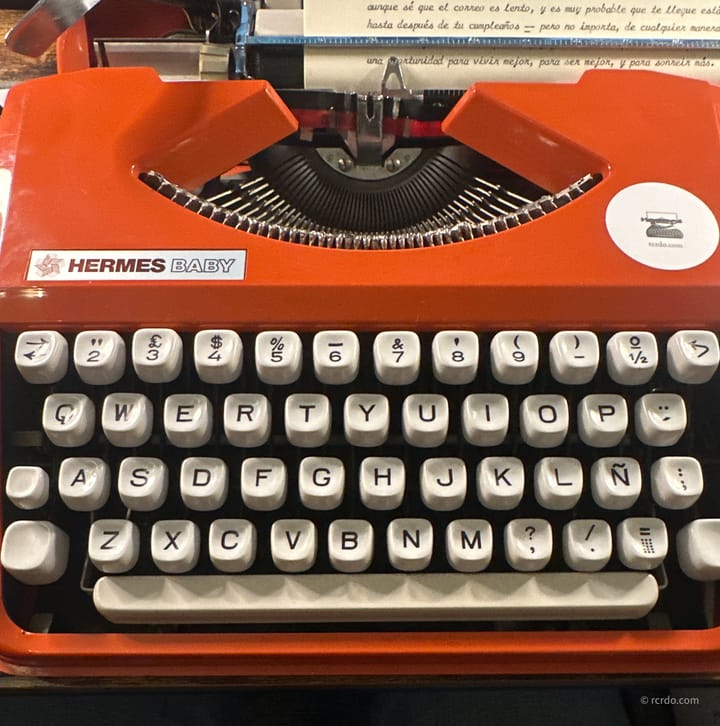Choosing the correct writing app is important

I am so glad that today is not as cold as last Friday. Last week it was very cold here in the Seattle area, and last Friday, I decided to stay home and write and read from the comfort of my own desk and sip my own coffee. On Fridays, I have the freedom to write, read, walk, take photographs, code, and more, without time constraints. It is one of the benefits of a 4-day work week, or as I like to call it, a 3-day weekend.
It’s winter in the Pacific Northwest, characterized by rainy weather and mild temperatures—today, the weather is just right. I grabbed my rain jacket and backpack, and walked out the door towards a nearby Capital One Cafe. It’s been a while since I discovered the Capital One Cafes, I was in San Francisco for a conference and saw an opening of one near Market street, probably one the first ones they opened – the very first one was opened in Boston in 2013. They were giving away coffee, snacks, and to my surprise, a pleasant place where I could work with my laptop, plenty of power outlets, and a nice atmosphere.
With coffee in hand and a cup with water to keep hydrated, I took my laptop out of my backpack and proceeded to type this post. I am now using Scrivener, a writing app that initially overwhelmed me with its many features when I first tried it. Last night I downloaded it and installed it again. But this time, I decided to go through the interactive manual and I finally understand what the main options are, the layout, formatting options, etc. Writing within the app and having full control of all formatting, layout, and output is great – nothing that I’ve used is even close. If all you want to do is write and not share what you write with anyone, then I recommend using my other favorite writing apps, Bear and iA Writer. Both of them are excellent and it’s what I’ve used for years. I have also used Ulysses, but since I ran into problems with the syncing feature I stopped and haven’t used it since.
The reason why I am trying Scrivener is for its formatting and output options. All of my writing so far has only been shared via the web, but I want to write a book, many actually, and I think the Scrivener app is a tool that in addition to have an excellent editor, it also offers many formatting and output options via their compile feature. I want to be able to print and examine the output and layout close that what it will look like in a book format. Now, you can use anything, including a typewriter to write, but for simplicity – you heard that right – I am choosing Scrivener. This isn’t a technical or in-depth review, these are just my first impressions. I can get the simplicity of the Bear app by going into “composition mode” or more commonly called, focus mode. It is also a simpler solution for me because I don’t need to rely on external folder structures to organize my writing and all other assets such as images and notes. Instead, I can use Scrivener’s project features and have all research, writing, notes, images, etc. in one place. All available to me from the same app.
So far my writing has been shared in the web as blog posts, with the exceptions of some articles that I wrote a while ago and were published in the now defunct asp.netPRO magazine. I am not saying that you need specific apps or tools to write. Personally, my favorite way to write is with pen and paper. However, choosing a writing app when you are thinking about publishing your writing can be very beneficial, and to me, the two main benefits are having control of how my writing will look on paper once I print it, and having all items related to my writing in one place. I tried using Ulysses a while back, but it wasn’t as simple to organize all the items related to a book, at least not for me. The Bear app uses hashtags to organize your content, and this isn’t enough for my current needs. Other writing apps such as MS Word and Google Docs are great for writing, but they fall short when it comes to organizing. Can you do it? Of course, many writers use those tools to do their job, but that’s what’s great with tools, there are many to choose from, all created with specific needs and users in mind.

As a software engineer, I like having all the assets related to a project in one place, where I can see them and use them when needed. I see Scrivener as my IDE for writing. In software, an IDE stands for Integrated Development Environment. Scrivener is my Integrated Writing Environment or IWE. And this is why my beloved reader, I think that choosing the correct writing app is important.




Comments ()